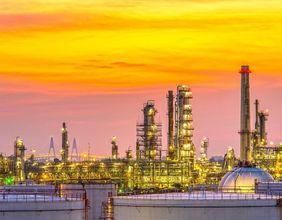Brazilian mining giant Vale S.A. (NYSE:VALE), one of the world’s largest iron ore producers, has raised its 2024 iron ore production forecast following a stronger-than-expected performance in the first half of the year. The company now expects to produce between 323 million and 330 million metric tons of iron ore in 2024, up from its previous guidance of 310 million to 320 million metric tons.
This adjustment comes after Vale exceeded its initial production targets in the first half of the year, citing increased operational stability and reduced production deviations as key factors. The company’s ability to ramp up production despite market headwinds underscores its resilience and strategic positioning within the global iron ore industry.
Strong First Half Performance Leads to Increased Guidance
Vale’s decision to raise its 2024 iron ore production forecast reflects the company’s strong performance in the first half of the year. The company had initially planned to produce 144 million metric tons during this period but ended up producing 151 million metric tons, exceeding expectations. This higher output was driven by greater operational stability across its mining sites, as well as improvements in production efficiency.
In a filing with securities regulators, Vale noted that it was confident about hitting the upper end of its previous guidance earlier this year, and the strong results in early 2024 have validated that confidence. This increase in production comes at a time when global demand for iron ore remains volatile, especially due to uncertainties in China’s economy, the world’s largest consumer of the commodity.
Vale’s ability to exceed its production targets is a significant achievement, especially as it navigates challenges in the global commodities market, including fluctuating demand and price pressures. Despite these challenges, Vale’s management remains optimistic about the outlook for 2024 and beyond.
Concerns Over Chinese Demand and Market Outlook
While Vale has increased its iron ore production forecast, the broader market for iron ore has faced significant challenges in 2024, particularly due to concerns about slowing demand from China. China’s economic recovery has been weaker than expected, and its demand for iron ore, a critical input in steel production, has been subdued. This has led to a decline in iron ore prices year-to-date, raising concerns among market participants.
Despite these concerns, Vale has expressed optimism about the future, predicting a “balanced” iron ore market in 2024 and 2025. The company believes that while demand from China may fluctuate, supply and demand dynamics will remain stable enough to support the market. Vale’s strong production performance, coupled with its focus on operational efficiency, positions the company to weather potential market volatility.
Vale has also highlighted that its profit margins across all operations have remained positive in 2024, despite the downward pressure on iron ore prices. This suggests that the company’s focus on cost control and efficiency has helped offset some of the pricing challenges in the broader market.
Lower Nickel Output Forecast and Strategic Adjustments
In addition to its iron ore production update, Vale has slightly revised its forecast for nickel production in 2024. The company now expects to produce between 153,000 and 168,000 metric tons of nickel, down from its previous guidance of 160,000 to 175,000 metric tons. This adjustment reflects the company’s partial divestment from Vale Indonesia (IDX:INCO), a subsidiary involved in nickel mining, which was completed in July.
While the forecast for nickel output has been lowered, Vale noted that its production costs for both nickel and copper are expected to be lower than initially projected in 2024. This is an important consideration, as nickel and copper are both critical materials in the production of electric vehicle (EV) batteries and renewable energy technologies, sectors that are experiencing significant growth globally.
Vale’s decision to lower its nickel forecast is tied to its broader strategy of reshaping its base metals business, which includes seeking partnerships and divestments in certain regions to optimize its operations. The partial divestment of its Indonesian nickel operations aligns with this strategy and reflects Vale’s focus on improving operational efficiency and shareholder value.
The Global Iron Ore Market and Vale’s Competitive Position
As one of the largest iron ore producers in the world, Vale plays a critical role in the global supply chain for this essential raw material. Iron ore is the primary ingredient in steel production, and the health of the global steel industry is closely tied to demand for iron ore. However, the iron ore market is highly influenced by the economic performance of major steel-producing countries, particularly China, which consumes more than half of the world’s iron ore.
In 2024, Vale and other major iron ore producers have faced mixed signals from the Chinese economy. While China remains a dominant player in the global steel market, its economic recovery from the COVID-19 pandemic has been uneven, leading to concerns about its future demand for iron ore. This uncertainty has contributed to lower iron ore prices and increased volatility in the commodities market.
Despite these challenges, Vale’s management has maintained a positive outlook for the iron ore market in 2024 and beyond. The company’s decision to raise its production forecast suggests confidence that global demand will remain robust enough to absorb the additional supply. Moreover, Vale’s focus on operational efficiency and cost control has helped the company maintain healthy margins, even in a challenging price environment.
Focus on Sustainability and Long-Term Growth
In addition to its focus on production and efficiency, Vale has also made significant strides in incorporating sustainability into its operations. As one of the largest mining companies globally, Vale has faced increasing pressure from investors and stakeholders to reduce its environmental impact and improve its social and governance practices.
Vale has committed to ambitious sustainability targets, including reducing its carbon emissions and improving water management at its mining sites. The company is also investing in technologies and processes that aim to minimize the environmental footprint of its operations. For instance, Vale has been developing dry processing techniques for iron ore, which require less water and energy compared to traditional methods.
Furthermore, Vale’s involvement in the nickel and copper markets aligns with the global transition to a low-carbon economy. Nickel and copper are essential materials for renewable energy technologies and electric vehicles, and Vale is positioning itself to benefit from the growing demand for these metals.
Financial Performance and Future Prospects
Vale’s strong first-half production results, coupled with its raised iron ore output forecast, suggest that the company is well-positioned to continue delivering solid financial performance in 2024. The company’s ability to exceed its production targets and maintain positive margins, despite challenging market conditions, underscores its operational resilience and strategic focus.
In terms of financial performance, Vale has benefited from its diversified portfolio of commodities, including iron ore, nickel, and copper. This diversification has helped the company mitigate the impact of price fluctuations in any one commodity, allowing it to maintain stable revenues and profitability.
Looking ahead, Vale’s strategic focus on operational efficiency, sustainability, and market growth opportunities positions the company for long-term success. While challenges remain in the global iron ore market, particularly with regard to Chinese demand, Vale’s strong production capabilities and cost management initiatives provide a solid foundation for future growth.
Bottomline
Vale’s decision to raise its 2024 iron ore production forecast reflects its strong operational performance in the first half of the year and its confidence in the future of the global iron ore market. Despite concerns about Chinese demand and price volatility, Vale has demonstrated resilience through its ability to exceed production targets and maintain positive margins.
The company’s revised nickel forecast, following its partial divestment from Vale Indonesia, highlights its strategic adjustments as it focuses on efficiency and shareholder value. As Vale continues to navigate the challenges and opportunities in the global commodities market, its strong production capabilities and focus on sustainability will be key drivers of its long-term success.


_06_24_2025_03_45_59_650550.jpg)



